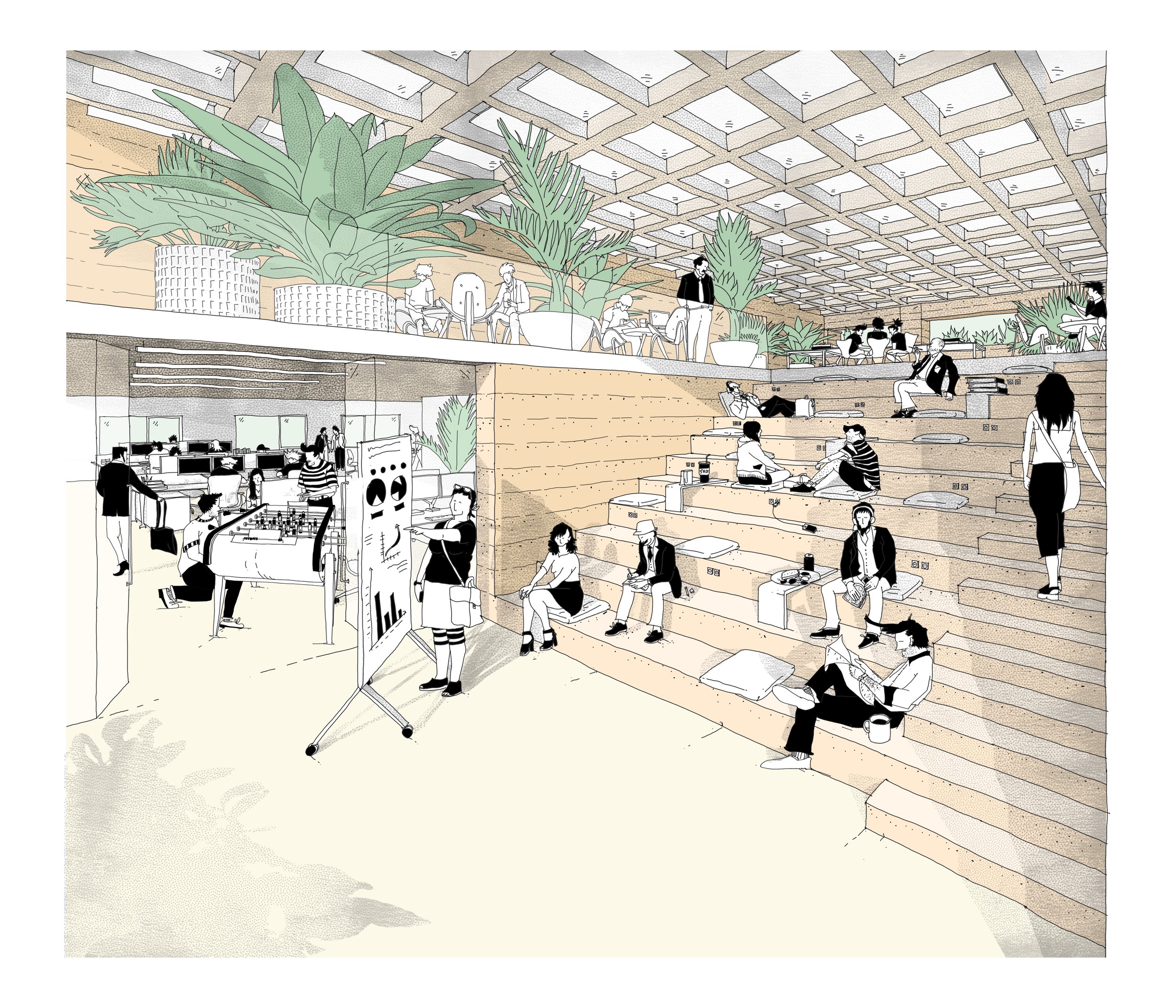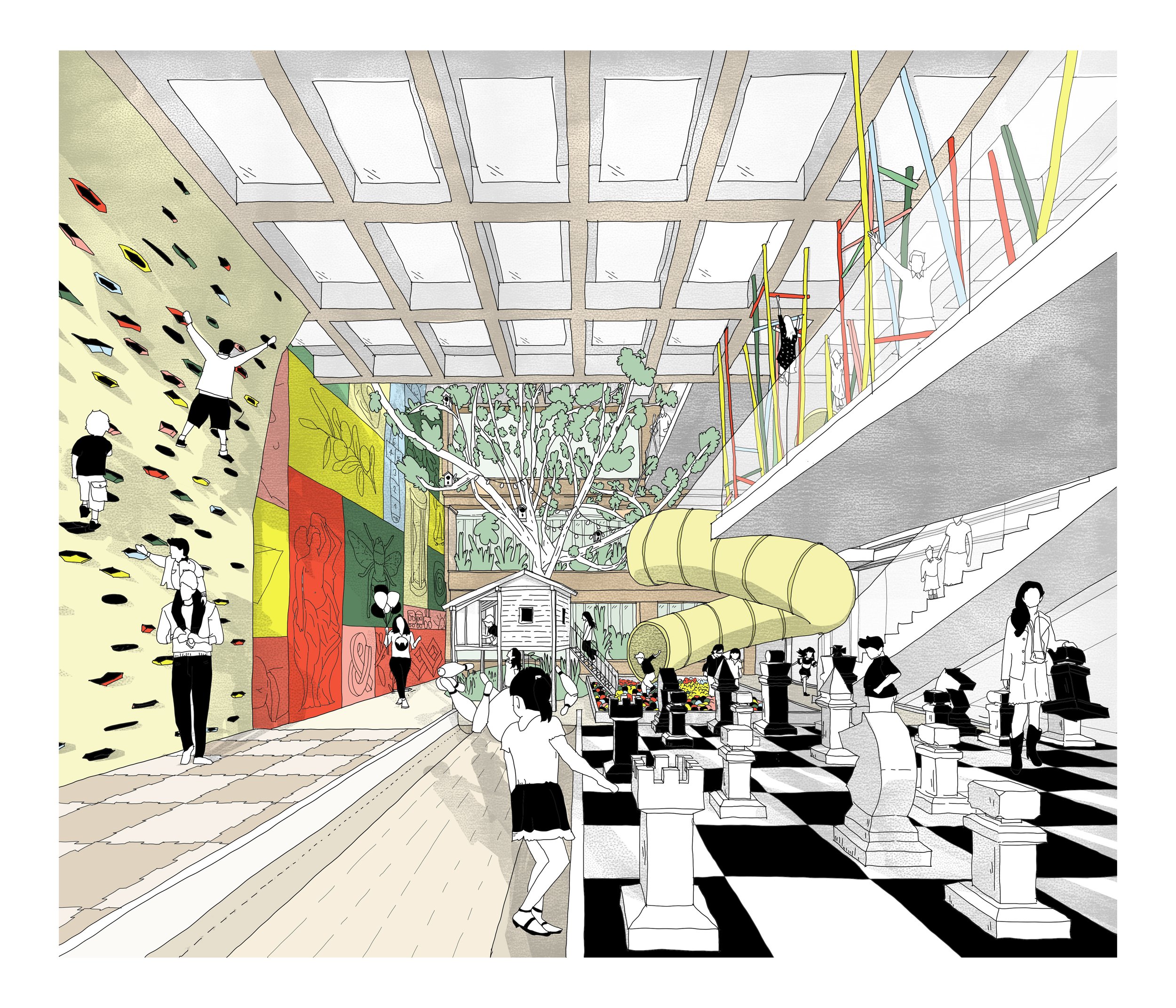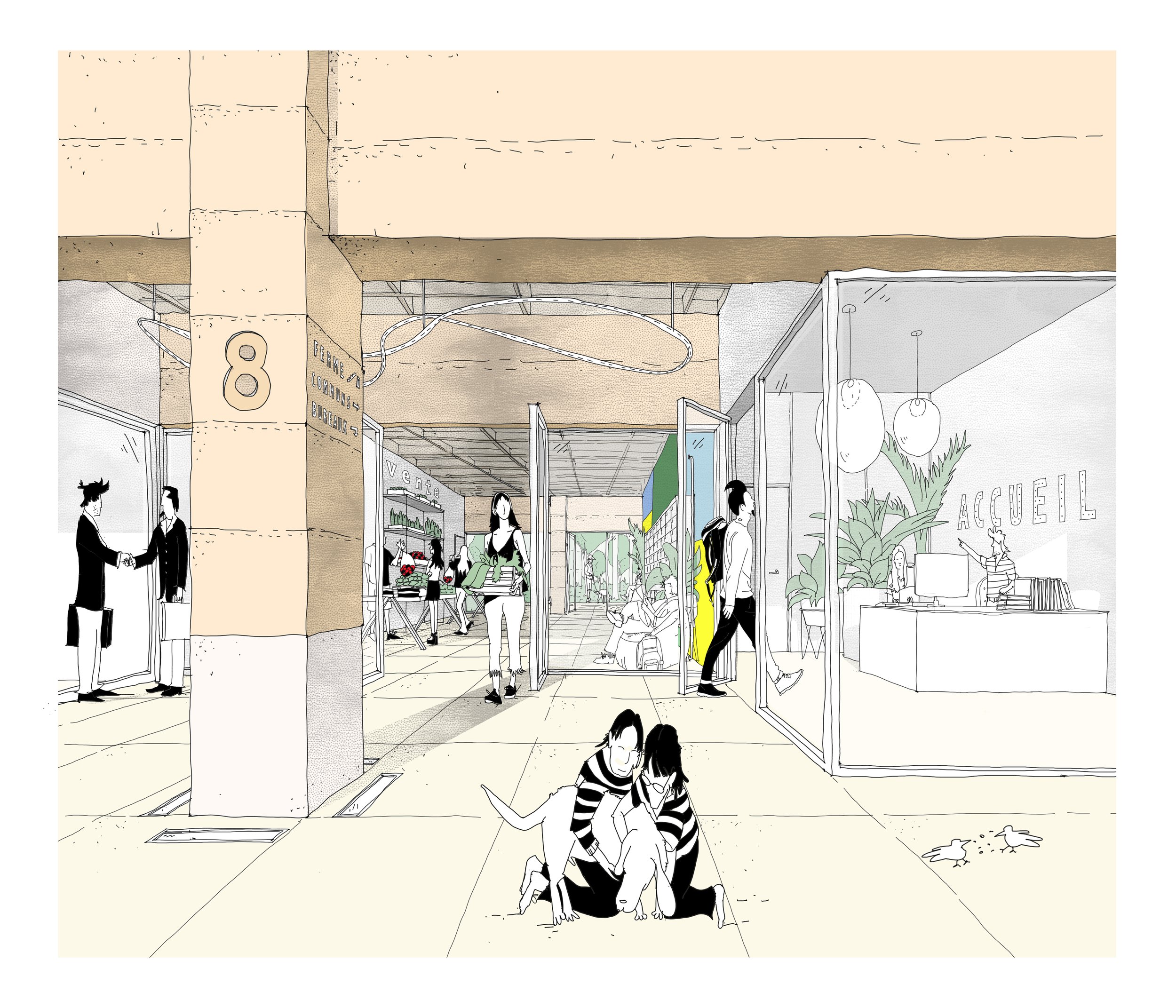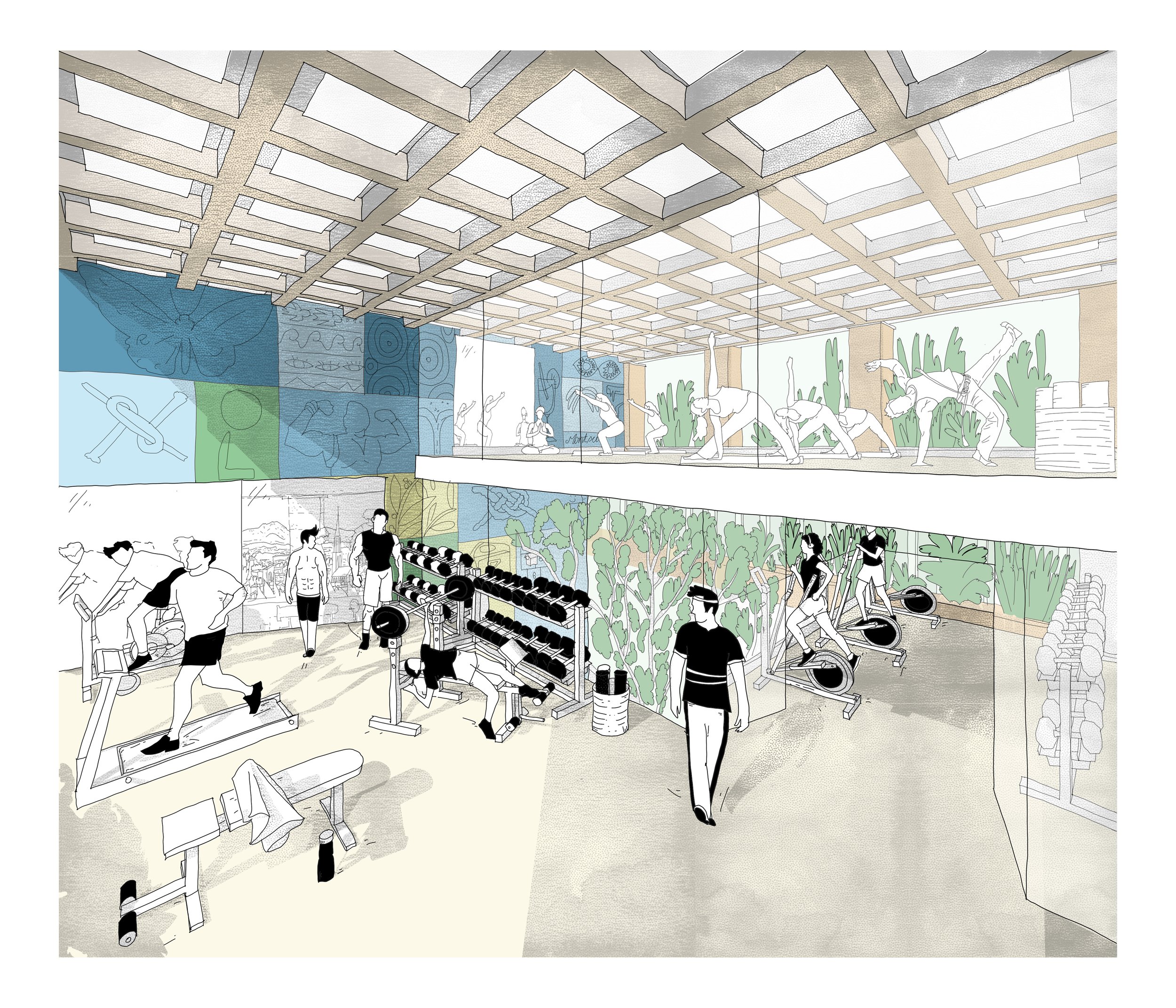FNS
Folie Nouveau Saint-Roch
Montpellier, FR
FR |
Faire une folie, ne devrait pas être un exercice de frivolité qui appellerait uniquement des gestes bruyants et brouillons. C’est pour nous une méditation nécessaire sur la ville et la possibilité que celle-ci porte en son sein des moments de suspension et de pause. C’est une invitation à la nature et au vivant dans l’intérieur et dans l’épaisseur du bâti. C’est un discours dont les mots sont ceux de l’architecture avec ses codes et ses sens détournés. Enfin, c’est une célébration de l’inutile, du contingent et de l’inattendu, en ce qu’il élargit le champ du réel et des possibles.
La nature, le vivant s’invite et s’immisce dans la Folie, historiquement dans une tradition pittoresque et romantique qui convoque l’imaginaire des ruines comme une méditation sur le temps qui passe. Aujourd’hui inviter la nature est rendre compte de l’effondrement violente du vivant. C’est faire sanctuaire. Tous nos bâtiments doivent maintenant laisser la place, ne plus être de simples carapaces et redevenir des membranes poreuses qui respirent.
La nature est au sol sur le parvis, dans la dilatation du parc et l’effacement de cette limite. Elle s’invite dans l’épaisseur exagérée de la façade qui abrite des jardinières, dans l’ensemble des loggias. Elle devient productive sur le toit avec une ferme et profondément symbolique avec un immense arbre planté au cœur de l’espace commun et suspendu dans le vide.
ENG |
Doing something crazy shouldn't be an exercise in frivolity that only calls for noisy, messy gestures. For us, it's a necessary meditation on the city, and the possibility that it holds within it moments of suspension and pause. It's an invitation to nature and the living within and within the thickness of buildings. It's a discourse whose words are those of architecture, with its codes and hijacked meanings. Finally, it's a celebration of the useless, the contingent and the unexpected, in that it broadens the field of the real and the possible.
Nature, the living, invites itself and interferes in Folie, historically in a picturesque and romantic tradition that conjures up the imaginary of ruins as a meditation on the passing of time. Today, to invite nature is to take account of the violent collapse of living things. It means creating a sanctuary. All our buildings must now make way, no longer mere shells, but porous membranes that breathe.
Nature is on the ground on the forecourt, in the dilation of the park and the erasure of this boundary. It invites itself into the exaggerated thickness of the façade, which houses planters, and into all the loggias. It becomes productive on the roof with a farm and deeply symbolic with an immense tree planted at the heart of the communal space and suspended in the void.








